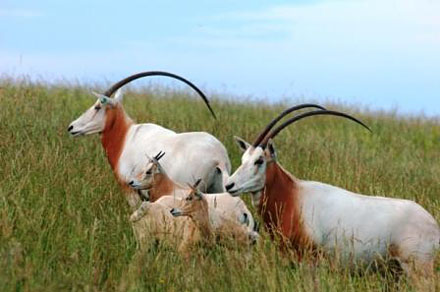There has been a lot of chatter about the potential permitting status change of scimitar-horned oryx, addax and dama gazelle under the Endangered Species Act (ESA). This change would drastically change the hunting of these species in Texas and other states. Well, the U.S. Fish and Wildlife Service (USFWS) announced a final rule to eliminate a regulation that authorized certain otherwise prohibited activities under the Endangered Species Act (ESA) with U.S. captive-bred animals and sport-hunted trophies of three endangered African antelope species.
The regulation being eliminated had excluded these three species from permitting requirements as long as certain conditions were met. These species must now be permitted. The removal of this exclusion requires anyone in the United States who possesses any of these three antelope species to obtain authorization from the USFWS if they wish to carry out otherwise prohibited activities, including interstate or foreign commerce, import, export (including re-export), culling or other forms of take.

The USFWS currently approves such activities for similar ESA-listed captive-bred species on ranches and in zoos under the same authorization process. If a captive-breeding facility, such as a zoo or ranch, is legally carrying out activities that were previously authorized under the exclusion, they should be able to continue those activities with the proper permit or other authorization.
In 2005, the USFWS added these three antelope species with native ranges in Africa to the Federal List of Endangered and Threatened Wildlife. The species all inhabit the sparse desert regions of Northern Africa. The dama gazelle and addax are considered critically endangered, while free-ranging populations of the scimitar-horned oryx may no longer exist in the wild. However, these species, particularly the scimitar-horned oryx, breed well in captivity. There are thought to be thousands of these animals in zoos, on game ranches, and in other such facilities in the United States and elsewhere.
Captive breeding in the United States has contributed to the survival of the scimitar-horned oryx, addax and dama gazelle worldwide by rescuing these species from near extinction and providing the founder stock necessary for reintroduction. However, many U.S. game ranches offer limited hunting of these species on their lands to manage the size of their populations and remove surplus males.
In general, the ESA prohibits the import or export of any listed species, or its parts or products, as well as sale in interstate or foreign commerce, without prior authorization from the Service. However, in an effort to support captive breeding of these critically endangered species and maintain genetically viable populations, the Service granted an exclusion at the time these species were listed that allowed owners of these animals to continue carrying out breeding and other activities, including interstate commerce and hunting for herd management, without obtaining an individual permit.
The exclusion was challenged in Federal District Court by Friends of Animals and other groups. In 2009, the court remanded the regulation back to the USFWS, directing the agency to provide opportunities for the public to review and comment when authorizing otherwise prohibited activities — interstate or foreign commerce, import or re-import, export or re-export, or take (other than normal husbandry, breeding, and non-injurious veterinary procedures) — with these listed species, consistent with the ESA.
The Service considered whether there were alternative means to meet the Court’s ruling without requiring ranches or other facilities to obtain a permit or other authorization. However, the USFWS was unable to identify a viable alternative from either internal discussions or its review of public comments.
Consequently, the USFWS is announcing a final rule eliminating the exclusion of the three endangered African antelope species from certain prohibitions under the ESA. The final rule requires individuals to obtain an endangered species authorization under the currently established ESA regulations by applying for a permit or captive-bred wildlife registration to conduct any prohibited activities.
The final rule will become effective 90 days after its publication in the Federal Register on April 4, 2012. The hunting of scimitar-horned oryx, addax and dama gazelle can still continue, but the permitting process will create additional hassle and cost. I suspect many ranches will completely eliminate these species from their property before these regulations take affect.